Raoul Dufy - Village - Original Etching Dimensions: 13 x 10''. Edition of 200 1940 Edition Les Bibliophiles du Palais, Paris Raoul Dufy Born in 1877, the French painter Raoul Dufy was one of the more controversial contributors to the Fauvism movement. Dufy’s paintings are a celebration of luxury and color, a style that helped Dufy carve his niche in the artistic landscape. PERSONAL LIFE Raoul Dufy was born in Le Havre in 1877. He was part of a very large family, and finances were somewhat difficult in the family. Dufy was lucky to be born during a vibrant time in the French art community. As a young man, he studied at the Ecole Municipale des Beaux-Arts du Havre. During his studies, Dufy became friends with fellow artist Othon Friesz. He rented a studio with Friesz at one point. In 1911, Dufy married Eugenie Brisson. He struggled with arthritis for much of his life, relying on cortisone treatments to allow him to continue painting. CAREER In 1900, Dufy received a scholarship that allowed him to go to Paris. While attending the Ecole des Beaux-Arts, Dufy was inspired by the many different art movements that were coalescing in France at the time. He experimented with many different styles during his artistic career. In 1903, Dufy first exhibited his work at the prestigious Salon des Independents. During this time, his art showed the influence of the Impressionists. His oil painting, Carnival on the Grands Boulevards, is one example of this early Impressionist work. By 1905, however, Dufy was drawing most of his inspiration from the creative, daring Fauvists. He also experimented with Cubism, working with Georges Braque. The variety of styles began to merge into Dufy’s unique vision as an artist. Completed in 1910, Mer et Nuages shows Dufy’s bold, playful use of bright colors. It also illustrates Dufy’s fondness for portraying beautiful and luxurious scenes, particularly French seaside tableaus. Throughout the 1920s and 1930s, Dufy developed a style that blended crisp, calligraphic lines with generous splashes of color. Le Chateau et la Grille and Le Retour des Ragates illustrate elements of this style. Painting was not Dufy’s sole interest. He was extremely far-ranging in his talents. Dufy created woodcut engravings to illustrate books. Later, he worked with the renowned designer Paul Poiret to create patterned fabrics. Dufy even designed theater sets and scenery. Although some critics found Dufy’s work too effervescent and not serious enough, the painter gained a reputation for his bright, versatile body of work.
Raoul Dufy - Villaggio - Acquaforte originale Dimensioni: 13 x 10''. Edizione di 200 1940 Edition Les Bibliophiles du Palais, Parigi Raoul Dufy Nato nel 1877, il pittore francese Raoul Dufy fu uno dei più controversi collaboratori del movimento Fauvismo. I dipinti di Dufy sono una celebrazione del lusso e del colore, uno stile che ha aiutato Dufy a ritagliarsi la sua nicchia nel panorama artistico. VITA PERSONALE Raoul Dufy è nato a Le Havre nel 1877. Faceva parte di una famiglia molto numerosa e le finanze erano un po' difficili in famiglia. Dufy ha avuto la fortuna di nascere in un periodo vivace della comunità artistica francese. Da giovane, studiò all'Ecole Municipale des Beaux-Arts du Havre. Durante i suoi studi, Dufy divenne amico del collega Othon Friesz. A un certo punto affittò uno studio con Friesz. Nel 1911, Dufy sposò Eugenie Brisson. Ha lottato con l'artrite per gran parte della sua vita, contando su trattamenti di cortisone per permettergli di continuare a dipingere. CARRIERA Nel 1900, Dufy ricevette una borsa di studio che gli permise di andare a Parigi. Mentre frequentava l'Ecole des Beaux-Arts, Dufy fu ispirato dai diversi movimenti artistici che si stavano coagulando in Francia in quel periodo. Sperimentò molti stili diversi durante la sua carriera artistica. Nel 1903, Dufy espose per la prima volta il suo lavoro al prestigioso Salon des Independents. Durante questo periodo, la sua arte mostra l'influenza degli impressionisti. Il suo dipinto a olio, Carnevale sui Grands Boulevards, è un esempio di questo primo lavoro impressionista. Dal 1905, tuttavia, Dufy trae la maggior parte della sua ispirazione dai creativi e audaci fauvisti. Sperimenta anche il cubismo, lavorando con Georges Braque. La varietà di stili cominciò a fondersi nella visione unica di Dufy come artista. Completato nel 1910, Mer et Nuages mostra l'uso audace e giocoso di Dufy di colori brillanti. Illustra anche la passione di Dufy per la rappresentazione di scene belle e lussuose, in particolare i tableau marini francesi. Nel corso degli anni Venti e Trenta, Dufy sviluppò uno stile che mescolava linee nitide e calligrafiche con generosi schizzi di colore. Le Chateau et la Grille e Le Retour des Ragates illustrano elementi di questo stile. La pittura non era l'unico interesse di Dufy. I suoi talenti erano estremamente diversificati. Dufy creò incisioni su legno per illustrare libri. Più tardi, lavorò con il famoso stilista Paul Poiret per creare tessuti a fantasia. Dufy ha anche progettato set teatrali e scenografie. Anche se alcuni critici trovarono il lavoro di Dufy troppo effervescente e non abbastanza serio, il pittore si guadagnò una reputazione per il suo corpo di lavoro brillante e versatile.


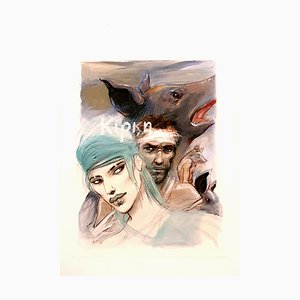



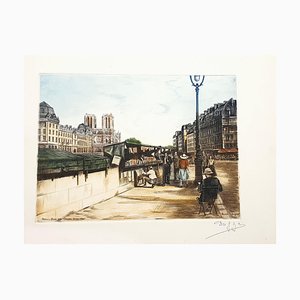
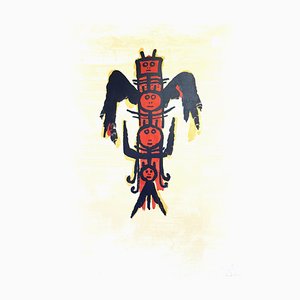
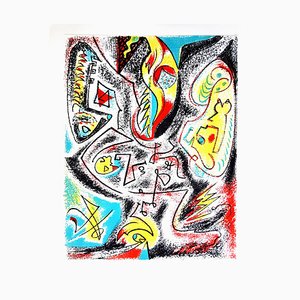
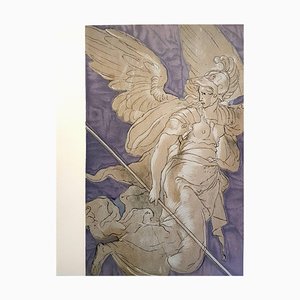
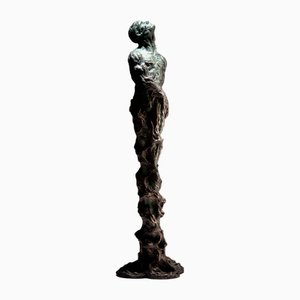
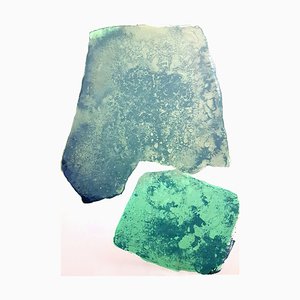


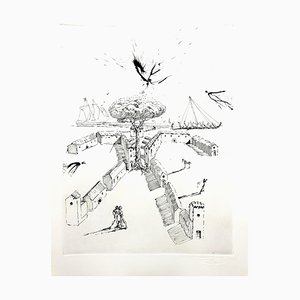

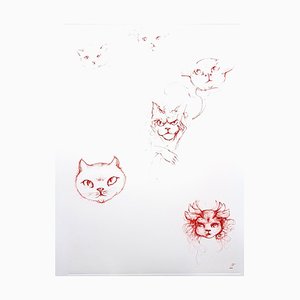
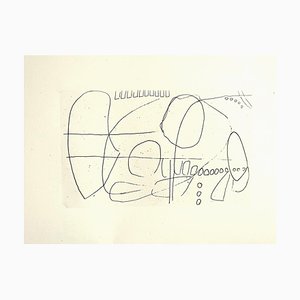
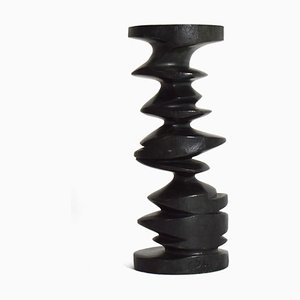

Contattaci
Fai un'offerta
Abbiamo notato che sei nuovo su Pamono!
Accetta i Termini e condizioni e l'Informativa sulla privacy
Contattaci
Fai un'offerta
Ci siamo quasi!
Per seguire la conversazione sulla piattaforma, si prega di completare la registrazione. Per procedere con la tua offerta sulla piattaforma, ti preghiamo di completare la registrazione.Successo
Grazie per la vostra richiesta, qualcuno del nostro team vi contatterà a breve.
Se sei un professionista del design, fai domanda qui per i vantaggi del Programma Commerciale di Pamono